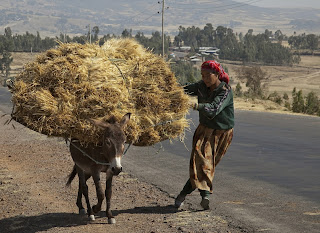It has been suggested that horses owned by travellers and gypsies are particularly exposed to reduced welfare, with practices such as fly-grazing, tethering, abandonment of animals and indiscriminate breeding being seen as common. However, there has been little work to investigate the well-being of these animals.
Researchers at the Royal (Dick) School of Veterinary Studies, and the Roslin Institute, both at Easter Bush near Edinburgh, Scotland, conducted a study to identify the welfare status of Traveller- and Gypsy- owned horses and to determine the factors that are considered risks to horse welfare in this community.
Marie Rowland and colleagues used a new approach, called ‘Qualitative Behaviour Assessment’ (QBA), to assess the horses’ behaviour and its affective state. A report of the work is published in Animals, as part of a special issue dedicated to equine welfare assessment.
They explain that Qualitative Behaviour Assessment is a “scientific approach used to measure the expressive quality of an animal’s behaviour and affective state. It is a ‘whole animal approach’ and is used to measure how the animal is expressing behaviour, often referred to as an animal’s ‘body language’. An animal’s mood or emotional state is communicated through its body language and is assessed using terms that describe their emotional repertoire. This is then applied to interpret an animal’s physical and psychological state.”
The research team assessed horses at different locations throughout the UK and Ireland, including Appleby Horse Fair, (England), and Ballinasloe Horse Fair (Ireland). They also saw horses at British Horse Society (BHS) horse health clinics, and horse owners’ homes and yards.
To ensure a standardised procedure was used, all horses were assessed visually from 1.5 metres away.
The overall assessment indicated that horse health and welfare was of a good standard, with an optimal body condition score and the absence of skin conditions observed in most horses. Signs of poor hoof care were the most frequently reported welfare problem. Nearly a third of horses showed hoof changes such as hoof wall cracks and defects and long toes.
In conclusion, Rowland and colleagues write: ”This study is the first of its type to begin to quantify the welfare of Traveller and Gypsy owned horses. Although further research is required to ensure generalisability to all horses within this population, these results are a good starting point on which to engage with stakeholders who previously identified Traveller and Gypsy owned horses in the UK and Ireland to be particularly vulnerable to poor welfare.”
For more details, see:
The Welfare of Traveller and Gypsy Owned Horses in the UK and Ireland
Marie Rowland, Neil Hudson, Melanie Connor, Cathy Dwyer, and Tamsin Coombs. (2022)
Animals 12, no. 18: 2402.
https://doi.org/10.3390/ani12182402





